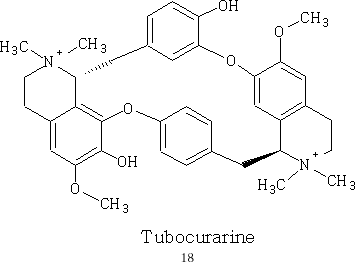Organic chemistry, Alkaloids and the Pharmaceutical Industry
The use of alkaloids also goes back to the sixteenth century; many compounds which had potent effects were alkaloids: Quinine {figure 8} was one that was used by the Quechua Indians; they used it to stop shivering brought on by cold.
The quinine came from the bark of the cinchona tree. It was first used for the treatment of malaria in the sixteen hundreds by a Jesuit Priest called Agostino Salumbrino who trained in Lima . He sent the bark back to Rome to test its use on malaria that had broken out there. Many cardinals, several popes and many citizens had died from the effects of malaria.
Salumbrino had observed the effects the bark had from the Indians and thought it might help to subdue the shivering that occurred with malaria, although his reasoning was incorrect the substance turned out to be correct for this disease.
The best form of quinine was first found in 1737 by Charles Marie de La Condamine, and large scale use of the drug didn't occur until 1850.
Curare from the curare vine ( Chondrodendron tomentosum ) is used by the South American Indians to immobilise their prey. Most of the Indians food lives in the trees and using blowpipes or poison tipped arrows the animals are shot, the curare works rapidly and the animals relax their grip and fall from the trees.

The alkaloid works by blocking the signals in the brain which tell the muscles to move - thereby rendering the whole body immobile to the point of becoming virtually paralyzed. It's not a toxin - and the effects generally wear off in about 90 minutes, in fact the curare will only work if introduced into the bloodstream and because it is not a toxin and cannot be introduced through the stomach the food is very safe to eat.
In 1942 curare and d-tubocurarine {18} were introduced into clinical anaesthesia, being the starting point for modern surgery. Today it is still sold as a prescription drug which is used as a general anaesthetic and muscle relaxant in various types of surgeries (during which breathing can be controlled with machines).